Projects
Researchers use NumFOCUS sponsored projects to solve the most challenging problems.
NumFOCUS aims to ensure that funding and resources are available to sustain projects in the scientific data stack over the long haul. One of the ways we accomplish this vision is through programs that provide support for open source scientific computing projects: our fiscal sponsorship program and our affiliation program. Explore our open source tools by language, features, or industry.
Search and filter projects
Search by name:
Filter by:

aeon
aeon is an open-source scikit-learn compatible toolkit for time series tasks such as forecasting, classification, regression, clustering, anomaly detection and segmentation. It provides a broad library of time series algorithms, including efficient implementations of the latest advances in research.

aeon
aeon is an open-source scikit-learn compatible toolkit for time series tasks such as forecasting, classification, regression, clustering, anomaly detection and segmentation. It provides a broad library of time series algorithms, including efficient implementations of the latest advances in research.

Aesara
Aesara is a Python library that allows one to define, optimize, and efficiently evaluate mathematical expressions involving multi-dimensional arrays.

Aesara
Aesara is a Python library that allows one to define, optimize, and efficiently evaluate mathematical expressions involving multi-dimensional arrays.

AiiDA
AiiDA is a workflow manager for computational science with a strong focus on provenance, performance and extensibility.

AiiDA
AiiDA is a workflow manager for computational science with a strong focus on provenance, performance and extensibility.
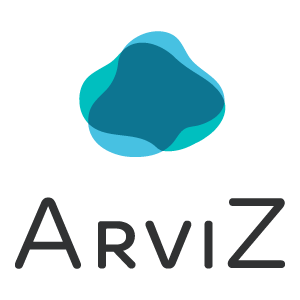
ArviZ
A unified codebase for Exploratory analysis of Bayesian models.

ArviZ
A unified codebase for Exploratory analysis of Bayesian models.

Asteroid
Asteroid is a Pytorch-based audio source separation toolkit that enables fast experimentation on common datasets. It comes with a source code that supports a large range of datasets and architectures, and a set of recipes to reproduce some important papers.

Asteroid
Asteroid is a Pytorch-based audio source separation toolkit that enables fast experimentation on common datasets. It comes with a source code that supports a large range of datasets and architectures, and a set of recipes to reproduce some important papers.

Astropy
The Astropy Project provides software tools and infrastructure to facilitate research by professional astronomers. In addition to maintaining a core Python package, the Astropy Project supports the development of high-grade affiliated packages by members of the astronomical community.

Astropy
The Astropy Project provides software tools and infrastructure to facilitate research by professional astronomers. In addition to maintaining a core Python package, the Astropy Project supports the development of high-grade affiliated packages by members of the astronomical community.

Awkward Array
Awkward Array is a Python library for nested, variable-sized data, including arbitrary-length lists, records, mixed types, and missing data, using NumPy-like idioms.

Awkward Array
Awkward Array is a Python library for nested, variable-sized data, including arbitrary-length lists, records, mixed types, and missing data, using NumPy-like idioms.
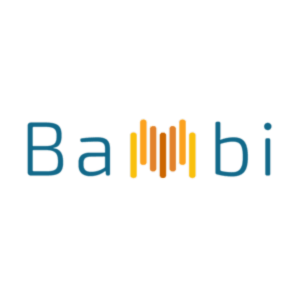
Bambi
Bambi is a high-level interface to build, fit, and explore Bayesian statistical models.

Bambi
Bambi is a high-level interface to build, fit, and explore Bayesian statistical models.

BigBang
BigBang is a toolkit for studying processes of open collaboration and deliberation, especially with respect to the production of digital infrastructures, to make them more transparent and accountable. This is achieved by utilising public communication channels and documents to reveal which actors are leading, following, or left out. It enables the analysis and visualisation of relationships, discourses, time series and knowledge networks.

BigBang
BigBang is a toolkit for studying processes of open collaboration and deliberation, especially with respect to the production of digital infrastructures, to make them more transparent and accountable. This is achieved by utilising public communication channels and documents to reveal which actors are leading, following, or left out. It enables the analysis and visualisation of relationships, discourses, time series and knowledge networks.

Bioconductor
Bioconductor is an open source, open development ecosystem of R-based software for bioinformatics. The project started around 2001 and has funding from the National Institutes of Health National Human Genome Research Institute and National Cancer Institute, and the Chan Zuckerberg Initiative. Bioconductor hosts, tests, and distributes over 2,000 R packages on genomic analysis methods by hundreds of active contributors. All packages are tested daily on Linux, Windows and Mac and are distributed globally with open licensing. Scientific, Technical, and Community Advisory boards meet on a regular basis. Annual conferences help disseminate new methods and tools for genome biology.

Bioconductor
Bioconductor is an open source, open development ecosystem of R-based software for bioinformatics. The project started around 2001 and has funding from the National Institutes of Health National Human Genome Research Institute and National Cancer Institute, and the Chan Zuckerberg Initiative. Bioconductor hosts, tests, and distributes over 2,000 R packages on genomic analysis methods by hundreds of active contributors. All packages are tested daily on Linux, Windows and Mac and are distributed globally with open licensing. Scientific, Technical, and Community Advisory boards meet on a regular basis. Annual conferences help disseminate new methods and tools for genome biology.

Blosc
Blosc is a very high performance meta-compressor specially designed for compressing binary data.

Blosc
Blosc is a very high performance meta-compressor specially designed for compressing binary data.

Bokeh
Bokeh is an interactive visualization library that targets modern web browsers for presentation. Bokeh can help anyone who would like to quickly and easily connect powerful PyData tools to interactive plots, dashboards, and data applications.

Bokeh
Bokeh is an interactive visualization library that targets modern web browsers for presentation. Bokeh can help anyone who would like to quickly and easily connect powerful PyData tools to interactive plots, dashboards, and data applications.

bqplot
Bqplot is a 2-D plotting library for Jupyter. Built upon the Jupyter widgets frameworks, it implements the grammar of graphics constructs.

bqplot
Bqplot is a 2-D plotting library for Jupyter. Built upon the Jupyter widgets frameworks, it implements the grammar of graphics constructs.

Cantera
Cantera is an open source software suite that helps users solve problems involving thermodynamics, chemical reaction rates, and fluid transport processes. The software is written to be flexible and efficient, handling these calculations in a way that lets the user shift their attention to other elements of their calculations. Because it is open source, the software can be easily extended to support the needs of any particular researcher.

Cantera
Cantera is an open source software suite that helps users solve problems involving thermodynamics, chemical reaction rates, and fluid transport processes. The software is written to be flexible and efficient, handling these calculations in a way that lets the user shift their attention to other elements of their calculations. Because it is open source, the software can be easily extended to support the needs of any particular researcher.

Catalyst
Catalyst is a PyTorch framework for Deep Learning Research and Development. It focuses on reproducibility, rapid experimentation, and codebase reuse so you can create something new rather than write yet another train loop.

Catalyst
Catalyst is a PyTorch framework for Deep Learning Research and Development. It focuses on reproducibility, rapid experimentation, and codebase reuse so you can create something new rather than write yet another train loop.
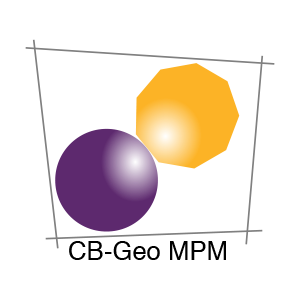
CB-Geo MPM
CB-Geo MPM is an HPC-enabled Material Point Method solver for large-deformation modeling. It supports isoparametric elements to model complex geometries and creates photo-realistic rendering.

CB-Geo MPM
CB-Geo MPM is an HPC-enabled Material Point Method solver for large-deformation modeling. It supports isoparametric elements to model complex geometries and creates photo-realistic rendering.

Clawpack
Clawpack (“Conservation Laws Package”) is a collection of finite volume methods for linear and nonlinear hyperbolic systems of conservation laws.

Clawpack
Clawpack (“Conservation Laws Package”) is a collection of finite volume methods for linear and nonlinear hyperbolic systems of conservation laws.

Colour
Colour is an open-source Python package providing a comprehensive number of algorithms and datasets for colour science. It is freely available under the New BSD License terms.

Colour
Colour is an open-source Python package providing a comprehensive number of algorithms and datasets for colour science. It is freely available under the New BSD License terms.

conda
conda is an open source package management system and environment management system that runs on Windows, macOS, Linux and z/OS. conda quickly installs, runs and updates packages and their dependencies. conda easily creates, saves, loads and switches between environments on your local computer. conda supports software written in any language.

conda
conda is an open source package management system and environment management system that runs on Windows, macOS, Linux and z/OS. conda quickly installs, runs and updates packages and their dependencies. conda easily creates, saves, loads and switches between environments on your local computer. conda supports software written in any language.

conda-forge
Conda-forge builds and distributes software packages, specializing in the hard-to-build or unique packages that often arise in a scientific computing context. Conda-forge is community-driven and community-curated. This means that no package is too domain-specific and all packages undergo review to ensure quality and interoperability. Conda-forge has a federated structure, where each package has its own list of maintainers, which anyone can join. This helps ensure that people who care about a package are the ones responsible for maintaining it. The conda-forge ecosystem is fully structured around automation. This lets our maintainers build packages for systems they do not own (like Windows or Mac), keep their packages up-to-date automatically, and ensure their packages maintain the highest level of quality.

conda-forge
Conda-forge builds and distributes software packages, specializing in the hard-to-build or unique packages that often arise in a scientific computing context. Conda-forge is community-driven and community-curated. This means that no package is too domain-specific and all packages undergo review to ensure quality and interoperability. Conda-forge has a federated structure, where each package has its own list of maintainers, which anyone can join. This helps ensure that people who care about a package are the ones responsible for maintaining it. The conda-forge ecosystem is fully structured around automation. This lets our maintainers build packages for systems they do not own (like Windows or Mac), keep their packages up-to-date automatically, and ensure their packages maintain the highest level of quality.

Crystal
Crystal is a statically-typed programming language that is super performant, yet friendly to humans.

Crystal
Crystal is a statically-typed programming language that is super performant, yet friendly to humans.

CuPy
CuPy is a GPU-based Python library for data analysis in numerical computing. CuPy shares the same API as NumPy and SciPy, allowing the use of GPUs at a minimal learning cost and without the need for in-depth knowledge of low-level GPU programming.

CuPy
CuPy is a GPU-based Python library for data analysis in numerical computing. CuPy shares the same API as NumPy and SciPy, allowing the use of GPUs at a minimal learning cost and without the need for in-depth knowledge of low-level GPU programming.

CVXPY
CVXPY is an open source Python-embedded modeling language for convex optimization problems.

CVXPY
CVXPY is an open source Python-embedded modeling language for convex optimization problems.

Cython
Cython is an optimising static compiler for both the Python programming language and the extended Cython programming language (based on Pyrex). It makes writing C extensions for Python as easy as Python itself.

Cython
Cython is an optimising static compiler for both the Python programming language and the extended Cython programming language (based on Pyrex). It makes writing C extensions for Python as easy as Python itself.
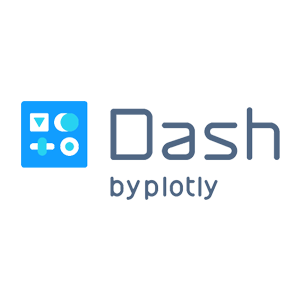
Dash
Dash is a Python framework for building analytical web applications. No JavaScript required. Built on top of Plotly.js, React, and Flask, Dash ties modern UI elements like dropdowns, sliders, and graphs to your analytical Python code.

Dash
Dash is a Python framework for building analytical web applications. No JavaScript required. Built on top of Plotly.js, React, and Flask, Dash ties modern UI elements like dropdowns, sliders, and graphs to your analytical Python code.

Dask
Dask provides advanced parallelism for analytics, enabling performance at scale for the tools you love.

Dask
Dask provides advanced parallelism for analytics, enabling performance at scale for the tools you love.

Data Retriever
The Data Retriever is a package manager for data. It downloads, cleans, and stores publicly available data, so that analysts spend less time cleaning and managing data, and more time analyzing it.

Data Retriever
The Data Retriever is a package manager for data. It downloads, cleans, and stores publicly available data, so that analysts spend less time cleaning and managing data, and more time analyzing it.
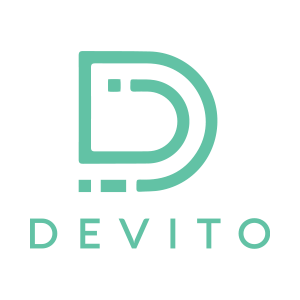
Devito
Devito is a Python package to implement optimized stencil computation (e.g., finite differences, image processing, machine learning) from high-level symbolic problem definitions.

Devito
Devito is a Python package to implement optimized stencil computation (e.g., finite differences, image processing, machine learning) from high-level symbolic problem definitions.
Dynare
Dynare is an open source software platform offering computational tools to handle a wide range of economic models. With its intuitive interface and well-documented features, Dynare simplifies the process of describing economic models, and provides academic, professional, and student social scientists with reliable routines to solve, simulate, and estimate them.
Dynare
Dynare is an open source software platform offering computational tools to handle a wide range of economic models. With its intuitive interface and well-documented features, Dynare simplifies the process of describing economic models, and provides academic, professional, and student social scientists with reliable routines to solve, simulate, and estimate them.

DyND
DyND is a C++ library for dynamic, multidimensional arrays.

DyND
DyND is a C++ library for dynamic, multidimensional arrays.

Econ-ARK
The aim of the Econ-ARK project is to make it easier for social scientists to do ‘structural modeling’ of economic choice behavior by providing a well-documented, open source codebase containing the core techniques in a way that can be relatively easily adapted to address many different questions in both macro- and microeconomics. ‘Structural’ modeling of economic choices aims to identify the logic or reasons behind observed behavior, rather than just describing that behavior statistically.

Econ-ARK
The aim of the Econ-ARK project is to make it easier for social scientists to do ‘structural modeling’ of economic choice behavior by providing a well-documented, open source codebase containing the core techniques in a way that can be relatively easily adapted to address many different questions in both macro- and microeconomics. ‘Structural’ modeling of economic choices aims to identify the logic or reasons behind observed behavior, rather than just describing that behavior statistically.

Effective Quadratures
Effective Quadratures is an open-source library for uncertainty quantification, machine learning, optimisation, numerical integration and dimension reduction – all using orthogonal polynomials.

Effective Quadratures
Effective Quadratures is an open-source library for uncertainty quantification, machine learning, optimisation, numerical integration and dimension reduction – all using orthogonal polynomials.

FEniCS Project
FEniCS is an automated finite element library used to solve equations used in modeling, featuring a domain-specific language and automated code generation. Users input a problem that looks very much like mathematical notation; FEniCS then translates that into computer code. It solves problems for which there is no analytical (exact) solution numerically.

FEniCS Project
FEniCS is an automated finite element library used to solve equations used in modeling, featuring a domain-specific language and automated code generation. Users input a problem that looks very much like mathematical notation; FEniCS then translates that into computer code. It solves problems for which there is no analytical (exact) solution numerically.
FESTIM
FESTIM, a leading open-source hydrogen transport simulation tool, relies on FEniCS. Globally adopted, it serves diverse sectors like nuclear design and hydrogen aviation advancements.
FESTIM
FESTIM, a leading open-source hydrogen transport simulation tool, relies on FEniCS. Globally adopted, it serves diverse sectors like nuclear design and hydrogen aviation advancements.

FluxML
Flux is 100% pure-Julia stack and provides lightweight abstractions on top of Julia’s native GPU and AD support. It makes easy things easy while remaining fully hackable and fast.

FluxML
Flux is 100% pure-Julia stack and provides lightweight abstractions on top of Julia’s native GPU and AD support. It makes easy things easy while remaining fully hackable and fast.

Folium
Folium builds on the data wrangling strengths of the Python ecosystem and the mapping strengths of the Leaflet.js library. Manipulate your data in Python, then visualize it in a Leaflet map via Folium.

Folium
Folium builds on the data wrangling strengths of the Python ecosystem and the mapping strengths of the Leaflet.js library. Manipulate your data in Python, then visualize it in a Leaflet map via Folium.

Fortran-lang
Fortran-lang is an open-source community that builds and maintains a set of modern tools and libraries for Fortran developers. Its main projects include the Fortran Standard Library, the Fortran Package Manager, and the Fortran website. Fortran-lang also maintains a growing ecosystem of canonical numerical and scientific libraries, editor plugins, and other tools. Finally, Fortran-lang provides an inclusive and welcoming online space for Fortran developers to collaborate and help each other.

Fortran-lang
Fortran-lang is an open-source community that builds and maintains a set of modern tools and libraries for Fortran developers. Its main projects include the Fortran Standard Library, the Fortran Package Manager, and the Fortran website. Fortran-lang also maintains a growing ecosystem of canonical numerical and scientific libraries, editor plugins, and other tools. Finally, Fortran-lang provides an inclusive and welcoming online space for Fortran developers to collaborate and help each other.

FreeMoCap Project
The Free Motion Capture Project (FreeMoCap) aims to provide research-grade markerless motion capture software to everyone for free.

FreeMoCap Project
The Free Motion Capture Project (FreeMoCap) aims to provide research-grade markerless motion capture software to everyone for free.

Gammapy
Gammapy is a community-developed, open-source Python package for gamma-ray astronomy built on Numpy, Scipy and Astropy. It is the core library for the CTA Science Tools but can also be used to analyse data from existing imaging atmospheric Cherenkov telescopes (IACTs), such as H.E.S.S., MAGIC and VERITAS. It also provides some support for Fermi-LAT and HAWC data analysis.

Gammapy
Gammapy is a community-developed, open-source Python package for gamma-ray astronomy built on Numpy, Scipy and Astropy. It is the core library for the CTA Science Tools but can also be used to analyse data from existing imaging atmospheric Cherenkov telescopes (IACTs), such as H.E.S.S., MAGIC and VERITAS. It also provides some support for Fermi-LAT and HAWC data analysis.

GDAL
GDAL, the Geospatial Data Abstraction Library, is an access and translator library for raster and vector geospatial data formats, often known as the swiss knife of geospatial.

GDAL
GDAL, the Geospatial Data Abstraction Library, is an access and translator library for raster and vector geospatial data formats, often known as the swiss knife of geospatial.

Gensim
Gensim is a Python library providing scalable statistical semantics, analysis of plain-text documents for semantic structure, and retrieval of semantically similar documents.

Gensim
Gensim is a Python library providing scalable statistical semantics, analysis of plain-text documents for semantic structure, and retrieval of semantically similar documents.
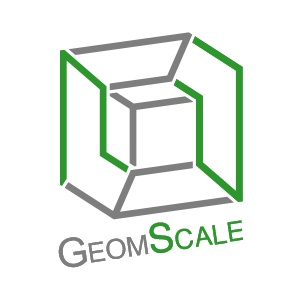
GeomScale
GeomScale is open-source project that lies at the intersection of data science, optimization, geometric and statistical computing.

GeomScale
GeomScale is open-source project that lies at the intersection of data science, optimization, geometric and statistical computing.

GeomStats
Geomstats is an open-source Python package for computations and statistics on manifolds. The package is organized into two main modules: geometry and learning.

GeomStats
Geomstats is an open-source Python package for computations and statistics on manifolds. The package is organized into two main modules: geometry and learning.
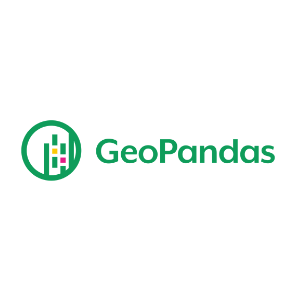
GeoPandas
NumFOCUS Sponsored Project since 2023
GeoPandas is an open source project to make working with geospatial data in Python easier. It combines the capabilities of pandas and shapely, providing geospatial operations in pandas and a high-level interface to multiple geometries to shapely. GeoPandas enables you to easily do operations in Python that would otherwise require a spatial database such as PostGIS.
Technical Details
GeoPandas is an open source project to make working with geospatial data in Python easier. It combines the capabilities of pandas and shapely, providing geospatial operations in pandas and a high-level interface to multiple geometries to shapely. GeoPandas enables you to easily do operations in Python that would otherwise require a spatial database such as PostGIS.
Applications
Users have used GeoPandas to help analyze geospatial data that represent the built and natural environments, including analyses of street networks, urban morphology, aquatic networks, and many other topics. GeoPandas makes it easier to integrate spatial data from multiple sources using a consistent data model, as well as providing easier access to many geospatial operations to describe and relate geospatial objects. While GeoPandas is focused on tabular-structured geometry data (e.g., points, lines, polygons), GeoPandas is well-integrated into the Python geospatial ecosystem, and thus is part of analytical workflows that enable users to perform analyses on raster / imagery datasets, networks, and other data types with different data structures. This enables GeoPandas to contribute to a very wide diversity of applications.
python
business & industry applications, science & academic research, higher education research & teaching, government
gis, geospatial, data analysis, data visualization, data wrangling

GNU Octave
GNU Octave is a high-level language, primarily intended for numerical computations. It provides a convenient command line interface for solving linear and nonlinear problems numerically, and for performing other numerical experiments using a language that is mostly compatible with Matlab. It may also be used as a batch-oriented language.Octave has extensive tools for solving common numerical linear algebra problems, finding the roots of nonlinear equations, integrating ordinary functions, manipulating polynomials, and integrating ordinary differential and differential-algebraic equations. It is easily extensible and customizable via user-defined functions written in Octave’s own language, or using dynamically loaded modules written in C++, C, Fortran, or other languages. GNU Octave is also freely redistributable software. You may redistribute it and/or modify it under the terms of the GNU General Public License (GPL) as published by the Free Software Foundation. Octave was written by John W. Eaton and many others.

GNU Octave
GNU Octave is a high-level language, primarily intended for numerical computations. It provides a convenient command line interface for solving linear and nonlinear problems numerically, and for performing other numerical experiments using a language that is mostly compatible with Matlab. It may also be used as a batch-oriented language.Octave has extensive tools for solving common numerical linear algebra problems, finding the roots of nonlinear equations, integrating ordinary functions, manipulating polynomials, and integrating ordinary differential and differential-algebraic equations. It is easily extensible and customizable via user-defined functions written in Octave’s own language, or using dynamically loaded modules written in C++, C, Fortran, or other languages. GNU Octave is also freely redistributable software. You may redistribute it and/or modify it under the terms of the GNU General Public License (GPL) as published by the Free Software Foundation. Octave was written by John W. Eaton and many others.

GNU Radio
GNU Radio is a free & open-source software development toolkit that provides signal processing blocks to implement software radios.

GNU Radio
GNU Radio is a free & open-source software development toolkit that provides signal processing blocks to implement software radios.

Gonum
Gonum is a set of numeric and scientific libraries written for the Go programming language. Our primary aim was to build functionality similar to that of numpy + scipy and today we are close to achieving this goal.

Gonum
Gonum is a set of numeric and scientific libraries written for the Go programming language. Our primary aim was to build functionality similar to that of numpy + scipy and today we are close to achieving this goal.
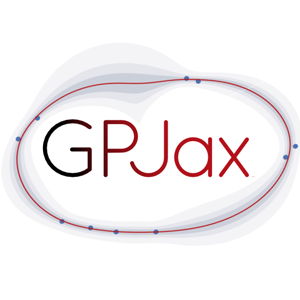
GP Jax
GPJax is a Python library that enables Bayesian inference with Gaussian processes using JAX on both CPUs and GPUs. The abstractions provided by GPJax are designed to be tightly coupled with the underlying math, providing a framework that is intuitive to researchers and practitioners alike. Support for classification, regression, and decision making/Bayesian optimization are available thanks to work from numerous contributors.

GP Jax
GPJax is a Python library that enables Bayesian inference with Gaussian processes using JAX on both CPUs and GPUs. The abstractions provided by GPJax are designed to be tightly coupled with the underlying math, providing a framework that is intuitive to researchers and practitioners alike. Support for classification, regression, and decision making/Bayesian optimization are available thanks to work from numerous contributors.

Gridap
Gridap provides a rich set of tools for the grid-based approximation of partial differential equations (PDEs) written 100% in the Julia programming language.

Gridap
Gridap provides a rich set of tools for the grid-based approximation of partial differential equations (PDEs) written 100% in the Julia programming language.

HoloViz
The HoloViz project is a set of open-source and interoperable tools for making sense of data at any scale, primarily through visualization in a web browser. These high-level tools are systematically layered, allowing users to quickly build with high-level interfaces and then drop down to lower levels when precise control is required. This layered approach results in visualizations that are immediately usable but can then continue to be inspected, pulled apart, reconfigured, and recomposed as needed. Whether conducting exploratory analysis or building complex dashboards, HoloViz tools are designed to work together to solve the entire problem of understanding and communicating data visually: hvPlot (interactive plotting built on Bokeh, Matplotlib, and Plotly), Panel (interactive apps and dashboards), Datashader (server-side rendering of large datasets), Colorcet (perceptually based colormapping), HoloViews and GeoViews (declarative high-level data description and plotting), Lumen (low-code and no-code plotting and apps), and Param (support for declarative parameter-based coding).

HoloViz
The HoloViz project is a set of open-source and interoperable tools for making sense of data at any scale, primarily through visualization in a web browser. These high-level tools are systematically layered, allowing users to quickly build with high-level interfaces and then drop down to lower levels when precise control is required. This layered approach results in visualizations that are immediately usable but can then continue to be inspected, pulled apart, reconfigured, and recomposed as needed. Whether conducting exploratory analysis or building complex dashboards, HoloViz tools are designed to work together to solve the entire problem of understanding and communicating data visually: hvPlot (interactive plotting built on Bokeh, Matplotlib, and Plotly), Panel (interactive apps and dashboards), Datashader (server-side rendering of large datasets), Colorcet (perceptually based colormapping), HoloViews and GeoViews (declarative high-level data description and plotting), Lumen (low-code and no-code plotting and apps), and Param (support for declarative parameter-based coding).

HPX
HPX is a general-purpose C++ runtime system for parallel and distributed applications of any scale.

HPX
HPX is a general-purpose C++ runtime system for parallel and distributed applications of any scale.

igraph
igraph is a collection of network analysis tools with the emphasis on efficiency, portability and ease of use.

igraph
igraph is a collection of network analysis tools with the emphasis on efficiency, portability and ease of use.

ipyvizzu
ipyvizzu is a data visualization tool that empowers data scientists and analysts to employ animation as a means of storytelling with data using Python.

ipyvizzu
ipyvizzu is a data visualization tool that empowers data scientists and analysts to employ animation as a means of storytelling with data using Python.
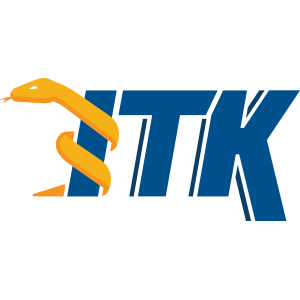
ITK
ITK is an open-source, cross-platform library that provides developers with an extensive suite of software tools for image analysis. Developed through extreme programming methodologies, ITK builds on a proven, spatially-oriented architecture for processing, segmentation, and registration of scientific images in two, three, or more dimensions.

ITK
ITK is an open-source, cross-platform library that provides developers with an extensive suite of software tools for image analysis. Developed through extreme programming methodologies, ITK builds on a proven, spatially-oriented architecture for processing, segmentation, and registration of scientific images in two, three, or more dimensions.

Julia
Julia is a fast and user-friendly programming language for high-performance scientific computing.

Julia
Julia is a fast and user-friendly programming language for high-performance scientific computing.

JuMP
JuMP is a modeling interface and a collection of supporting packages for mathematical optimization that is embedded in Julia. With JuMP, users formulate various classes of optimization problems with easy-to-read code, and then solve these problems using state-of-the-art open-source and commercial solvers. JuMP also makes advanced optimization techniques easily accessible from a high-level language.

JuMP
JuMP is a modeling interface and a collection of supporting packages for mathematical optimization that is embedded in Julia. With JuMP, users formulate various classes of optimization problems with easy-to-read code, and then solve these problems using state-of-the-art open-source and commercial solvers. JuMP also makes advanced optimization techniques easily accessible from a high-level language.

LFortran
LFortran is a modern open-source (BSD licensed) interactive Fortran compiler built on top of LLVM. It can execute user’s code interactively to allow exploratory work (much like Python, MATLAB or Julia) as well as compile to binaries with the goal to run user’s code on modern architectures such as multi-core CPUs and GPUs.

LFortran
LFortran is a modern open-source (BSD licensed) interactive Fortran compiler built on top of LLVM. It can execute user’s code interactively to allow exploratory work (much like Python, MATLAB or Julia) as well as compile to binaries with the goal to run user’s code on modern architectures such as multi-core CPUs and GPUs.

Magpylib
Magpylib is a Python package for calculating 3D static magnetic fields of permanent magnets, currents and other sources.

Magpylib
Magpylib is a Python package for calculating 3D static magnetic fields of permanent magnets, currents and other sources.

Manim
Manim is a community-maintained Python library for creating (mathematical) animations. With its simple, yet versatile interface, everyone is able to produce insightful visualizations.

Manim
Manim is a community-maintained Python library for creating (mathematical) animations. With its simple, yet versatile interface, everyone is able to produce insightful visualizations.
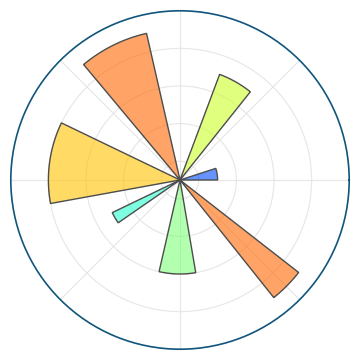
Matplotlib
Matplotlib is a flexible and customizable tool for producing static and interactive data visualizations.

Matplotlib
Matplotlib is a flexible and customizable tool for producing static and interactive data visualizations.
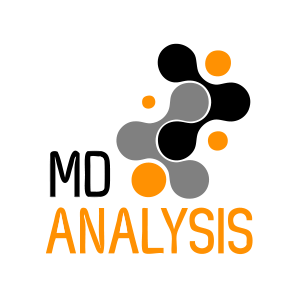
MDAnalysis
MDAnalysis is a Python library for the analysis of computer simulations of many-body systems at the molecular scale, spanning use cases from interactions of drugs with proteins to novel materials. It is widely used in the scientific community and is written by scientists for scientists.

MDAnalysis
MDAnalysis is a Python library for the analysis of computer simulations of many-body systems at the molecular scale, spanning use cases from interactions of drugs with proteins to novel materials. It is widely used in the scientific community and is written by scientists for scientists.
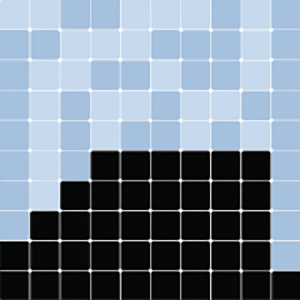
Mesa
Mesa is an Apache2 licensed agent-based modeling (or ABM) framework in Python.

Mesa
Mesa is an Apache2 licensed agent-based modeling (or ABM) framework in Python.
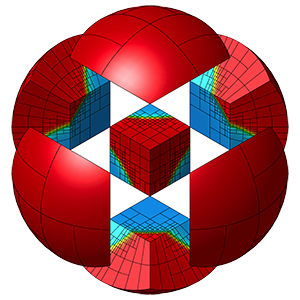
MFEM
MFEM is a free, lightweight, scalable C++ library for finite element methods. Its goal is to enable high-performance scalable finite element discretization research and application development on a wide variety of platforms, ranging from laptops to supercomputers.

MFEM
MFEM is a free, lightweight, scalable C++ library for finite element methods. Its goal is to enable high-performance scalable finite element discretization research and application development on a wide variety of platforms, ranging from laptops to supercomputers.

Micro-Manager
Micro-Manager is an open-source software for control and automation of microscope hardware.

Micro-Manager
Micro-Manager is an open-source software for control and automation of microscope hardware.

mlpack
mlpack is a fast, flexible machine learning library suitable for both data science prototyping and deployment.

mlpack
mlpack is a fast, flexible machine learning library suitable for both data science prototyping and deployment.
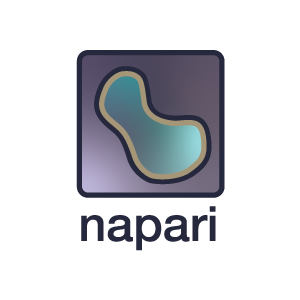
napari
napari is an n-dimensional image viewer in Python. It can view NumPy arrays as well as many others in the ecosystem, including Dask, Zarr, and Xarray.

napari
napari is an n-dimensional image viewer in Python. It can view NumPy arrays as well as many others in the ecosystem, including Dask, Zarr, and Xarray.

Neo
Neo is a Python package for working with electrophysiology data. It implements a hierarchical data model well adapted to intracellular and extracellular electrophysiology and EEG data.

Neo
Neo is a Python package for working with electrophysiology data. It implements a hierarchical data model well adapted to intracellular and extracellular electrophysiology and EEG data.
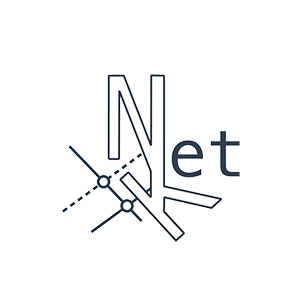
NetKet
NetKet is a Toolbox to apply Machine-Learning techniques to Quantum Physics problems.

NetKet
NetKet is a Toolbox to apply Machine-Learning techniques to Quantum Physics problems.
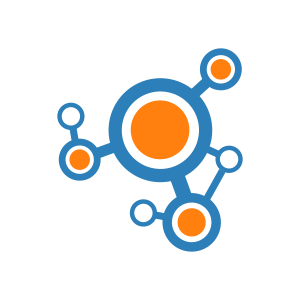
NetworkX
NetworkX is a Python package for the creation, manipulation, and study of the structure, dynamics, and functions of complex networks.

NetworkX
NetworkX is a Python package for the creation, manipulation, and study of the structure, dynamics, and functions of complex networks.
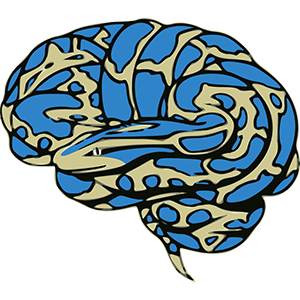
NiBabel
NiBabel is an input/output library for brain imaging, providing Python interfaces to common medical and neuroimaging file formats, including: ANALYZE, GIFTI, NIfTI1, NIfTI2, CIFTI-2, MINC1, MINC2, AFNI BRIK/HEAD, MGH, ECAT, Philips PAR/REC, and FreeSurfer geometry, annotation and morphometry files.

NiBabel
NiBabel is an input/output library for brain imaging, providing Python interfaces to common medical and neuroimaging file formats, including: ANALYZE, GIFTI, NIfTI1, NIfTI2, CIFTI-2, MINC1, MINC2, AFNI BRIK/HEAD, MGH, ECAT, Philips PAR/REC, and FreeSurfer geometry, annotation and morphometry files.

nteract
nteract is a stand-alone desktop application for developing computational notebooks. nteract allows users to craft narratives involving text, code, images, and data on the desktop rather than through a web application. This enables users to use their native system for file search as well as clicking to open notebook files.

nteract
nteract is a stand-alone desktop application for developing computational notebooks. nteract allows users to craft narratives involving text, code, images, and data on the desktop rather than through a web application. This enables users to use their native system for file search as well as clicking to open notebook files.

Numba
Numba gives you the power to speed up your applications with high performance functions written directly in Python.

Numba
Numba gives you the power to speed up your applications with high performance functions written directly in Python.

NumPy
NumPy is a universal data structure that fundamentally enables data analysis in numerical computing by permitting the exchange of data between algorithms. NumPy is a foundational project for the Python scientific computing stack.

NumPy
NumPy is a universal data structure that fundamentally enables data analysis in numerical computing by permitting the exchange of data between algorithms. NumPy is a foundational project for the Python scientific computing stack.

ObsPy
ObsPy is an open-source project dedicated to provide a Python framework
for processing seismological data.

ObsPy
ObsPy is an open-source project dedicated to provide a Python framework
for processing seismological data.

Open Journals
Open Journals is a collection of open source, open access journals. The flagship Journal of Open Source Software (JOSS) is a developer friendly journal for research software packages. With a formal peer review process that is designed to improve the quality of the software submitted, JOSS is designed to help researchers developing open source software to receive career credit for their work.

Open Journals
Open Journals is a collection of open source, open access journals. The flagship Journal of Open Source Software (JOSS) is a developer friendly journal for research software packages. With a formal peer review process that is designed to improve the quality of the software submitted, JOSS is designed to help researchers developing open source software to receive career credit for their work.

Open OnDemand
Developed by the Ohio Supercomputer Center (OSC) and funded by the National Science Foundation, Open OnDemand is an open-source portal that enables web-based access to HPC services. Clients manage files and jobs, create and share apps, run GUI applications and connect via SSH, all from any device with a web browser.

Open OnDemand
Developed by the Ohio Supercomputer Center (OSC) and funded by the National Science Foundation, Open OnDemand is an open-source portal that enables web-based access to HPC services. Clients manage files and jobs, create and share apps, run GUI applications and connect via SSH, all from any device with a web browser.

Open2C
Open2C is a community that develops and maintains open-source tools for 3D chromosome biology and genomic data science, primarily in Python.

Open2C
Open2C is a community that develops and maintains open-source tools for 3D chromosome biology and genomic data science, primarily in Python.

OpenFHE
OpenFHE (formerly Palisade: https://www.openfhe.org/) is an open-source project that provides efficient implementations of lattice cryptography building blocks and leading homomorphic encryption schemes. Originally developed by researchers in the cryptographic community, OpenFHE is actively being used by several groups in academics and industry (see the list at https://www.openfhe.org/community/) and is being incorporated into products to protect the privacy of individuals’ data while allowing computation on that data.
OpenFHE is designed for usability, providing simpler APIs, modularity, cross-platform support and integration of hardware accelerators. OpenFHE complies with the HomomorphicEncryption.org security standards for homomorphic encryption. We offer OpenFHE under the 2-clause BSD open-source license, making it easier to wrap and redistribute OpenFHE in products.

OpenFHE
OpenFHE (formerly Palisade: https://www.openfhe.org/) is an open-source project that provides efficient implementations of lattice cryptography building blocks and leading homomorphic encryption schemes. Originally developed by researchers in the cryptographic community, OpenFHE is actively being used by several groups in academics and industry (see the list at https://www.openfhe.org/community/) and is being incorporated into products to protect the privacy of individuals’ data while allowing computation on that data.
OpenFHE is designed for usability, providing simpler APIs, modularity, cross-platform support and integration of hardware accelerators. OpenFHE complies with the HomomorphicEncryption.org security standards for homomorphic encryption. We offer OpenFHE under the 2-clause BSD open-source license, making it easier to wrap and redistribute OpenFHE in products.

OpenMBEE
OpenMBEE is a community of Engineering Practitioners and Software Developers that seek to use Open Source as a means to expand the availability of Engineering Models and Software that connect technical information in a collaborative platform.
Our Mission is to establish an Enterprise Platform capable of connecting technical content between different technical disciplines through a collaborative document interface. This platform is intended to additionally provide open source Engineering Models and establish a means to integrate large variety of modeling and analysis tools and languages.
The origins of these assets come from the European Southern Observatory and the NASA Jet Propulsion Laboratory need for coordinating the complexity of building modern Telescopes and Robotics Spacecraft Using Software Development as a guide, we expect Engineering Modeling will leverage many of these capabilities and practices with additional novelty germane to the world of Engineering Modeling and Analysis. This is strongly evidenced by many of the NumFocus projects that already exist, such as Jupyter and the variety of Python-oriented analysis and visualization capabilities which have become main-stays of the Engineering Community.

OpenMBEE
OpenMBEE is a community of Engineering Practitioners and Software Developers that seek to use Open Source as a means to expand the availability of Engineering Models and Software that connect technical information in a collaborative platform.
Our Mission is to establish an Enterprise Platform capable of connecting technical content between different technical disciplines through a collaborative document interface. This platform is intended to additionally provide open source Engineering Models and establish a means to integrate large variety of modeling and analysis tools and languages.
The origins of these assets come from the European Southern Observatory and the NASA Jet Propulsion Laboratory need for coordinating the complexity of building modern Telescopes and Robotics Spacecraft Using Software Development as a guide, we expect Engineering Modeling will leverage many of these capabilities and practices with additional novelty germane to the world of Engineering Modeling and Analysis. This is strongly evidenced by many of the NumFocus projects that already exist, such as Jupyter and the variety of Python-oriented analysis and visualization capabilities which have become main-stays of the Engineering Community.

optimagic
optimagic is a Python package for nonlinear optimization. It particularly well suited to solve difficult problems with or without constraints. Additional core functionality includes statistical inference on estimated parameters

optimagic
optimagic is a Python package for nonlinear optimization. It particularly well suited to solve difficult problems with or without constraints. Additional core functionality includes statistical inference on estimated parameters

Orange
Open source data visualization and data analysis for novice and expert. Interactive workflows with a large toolbox.

Orange
Open source data visualization and data analysis for novice and expert. Interactive workflows with a large toolbox.

pandas
pandas is a data wrangling platform for Python widely adopted in the scientific computing community. pandas provides easy-to-use data ingestion, transformation, and export functions.

pandas
pandas is a data wrangling platform for Python widely adopted in the scientific computing community. pandas provides easy-to-use data ingestion, transformation, and export functions.

Pangeo
Pangeo is a community promoting open, reproducible, and scalable geoscience. This community provides documentation, develops and maintains software, and deploys computing infrastructure to make scientific research and programming easier. The Pangeo software ecosystem involves open source tools such as Xarray, Iris, Dask, Holoviz, Jupyter, and many other packages. There is no single software package called “pangeo”; rather, the Pangeo project serves as a coordination point between scientists, software, and computing infrastructure.

Pangeo
Pangeo is a community promoting open, reproducible, and scalable geoscience. This community provides documentation, develops and maintains software, and deploys computing infrastructure to make scientific research and programming easier. The Pangeo software ecosystem involves open source tools such as Xarray, Iris, Dask, Holoviz, Jupyter, and many other packages. There is no single software package called “pangeo”; rather, the Pangeo project serves as a coordination point between scientists, software, and computing infrastructure.

Parallel Ice Sheet Model (PISM)
The Parallel Ice Sheet Model (PISM) is an open-source modelling framework for ice sheets and glaciers. It is parallel, thermodynamically-coupled and capable of high resolution. PISM has been widely adopted as a tool for doing science for about twenty years now.

Parallel Ice Sheet Model (PISM)
The Parallel Ice Sheet Model (PISM) is an open-source modelling framework for ice sheets and glaciers. It is parallel, thermodynamically-coupled and capable of high resolution. PISM has been widely adopted as a tool for doing science for about twenty years now.

Parsl
Parsl is a flexible and scalable parallel programming library that augments Python with simple constructs for encoding parallelism. Developers annotate Python functions (called apps) that can represent pure Python functions or calls to external applications, to specify opportunities for concurrent execution. Parsl allows invocations of these apps, called tasks, to be connected by shared input/output data (e.g., Python objects or files) via which Parsl constructs a dynamic dependency graph of tasks to manage concurrent task execution where possible. Parsl includes an extensible and scalable runtime that allows it to efficiently execute Parsl programs on one to hundreds of thousands of cores on laptops, clusters, supercomputers, and clouds.

Parsl
Parsl is a flexible and scalable parallel programming library that augments Python with simple constructs for encoding parallelism. Developers annotate Python functions (called apps) that can represent pure Python functions or calls to external applications, to specify opportunities for concurrent execution. Parsl allows invocations of these apps, called tasks, to be connected by shared input/output data (e.g., Python objects or files) via which Parsl constructs a dynamic dependency graph of tasks to manage concurrent task execution where possible. Parsl includes an extensible and scalable runtime that allows it to efficiently execute Parsl programs on one to hundreds of thousands of cores on laptops, clusters, supercomputers, and clouds.

PETSc
PETSc is a numerical algorithm software library widely used by scientists and engineers to write scientific simulations. Such simulations are used to understand the world better, and engineer improved processes and products.

PETSc
PETSc is a numerical algorithm software library widely used by scientists and engineers to write scientific simulations. Such simulations are used to understand the world better, and engineer improved processes and products.

Polars
Fast multi-threaded, hybrid-out-of-core query engine focussing on DataFrame front-ends. Among the host languages are Python, Rust, NodeJS, R and SQL.

Polars
Fast multi-threaded, hybrid-out-of-core query engine focussing on DataFrame front-ends. Among the host languages are Python, Rust, NodeJS, R and SQL.
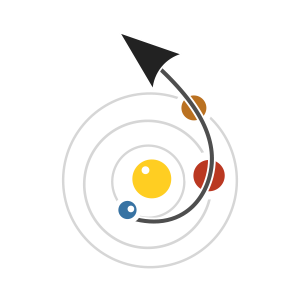
poliastro
poliastro is an open source (MIT) collection of Python functions useful in Astrodynamics and Orbital Mechanics, focusing on interplanetary applications. It provides a simple and intuitive API and handles physical quantities with units.

poliastro
poliastro is an open source (MIT) collection of Python functions useful in Astrodynamics and Orbital Mechanics, focusing on interplanetary applications. It provides a simple and intuitive API and handles physical quantities with units.
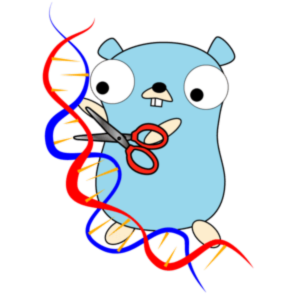
Poly
The aim of Poly is to provide a comprehensive software framework for engineering biology. Poly already ships a suite of parsers, optimizers, and various tools to engineer DNA and other biological sequences which we want to further expand to support more complex engineering workflows

Poly
The aim of Poly is to provide a comprehensive software framework for engineering biology. Poly already ships a suite of parsers, optimizers, and various tools to engineer DNA and other biological sequences which we want to further expand to support more complex engineering workflows

pomegranate
pomegranate is a Python module for fast and flexible probabilistic modeling inspired by the design of scikit-learn.

pomegranate
pomegranate is a Python module for fast and flexible probabilistic modeling inspired by the design of scikit-learn.

Project Optuna
Project Optuna develops tools for optimizing deep learning and other tasks that use hyperparameters. Project Optuna is comprised of Optuna and Chainer.

Project Optuna
Project Optuna develops tools for optimizing deep learning and other tasks that use hyperparameters. Project Optuna is comprised of Optuna and Chainer.
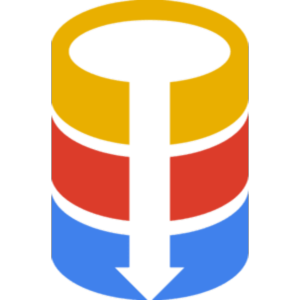
PRQL
PRQL is a modern language for transforming data — a simple, powerful, pipelined SQL replacement

PRQL
PRQL is a modern language for transforming data — a simple, powerful, pipelined SQL replacement
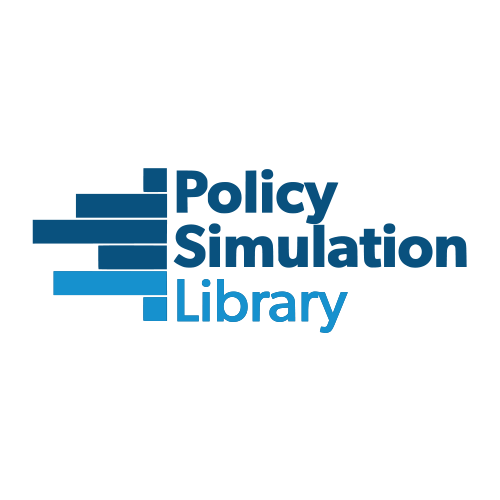
PSL
The Policy Simulation Library (PSL) is a collection of models and other software for public-policy decisionmaking. PSL is developed by independent projects that meet standards for transparency and accessibility.

PSL
The Policy Simulation Library (PSL) is a collection of models and other software for public-policy decisionmaking. PSL is developed by independent projects that meet standards for transparency and accessibility.

PUDL
PUDL is a data processing pipeline created by Catalyst Cooperative that cleans, integrates, and standardizes some of the most widely used public energy datasets in the US.

PUDL
PUDL is a data processing pipeline created by Catalyst Cooperative that cleans, integrates, and standardizes some of the most widely used public energy datasets in the US.

pvlib
pvlib python provides a set of functions and classes for simulating the performance of photovoltaic energy systems.

pvlib
pvlib python provides a set of functions and classes for simulating the performance of photovoltaic energy systems.

PyBaMM
PyBaMM (Python Battery Mathematical Modelling) solves physics-based electrochemical DAE models by using state-of-the-art automatic differentiation and numerical solvers. The Doyle-Fuller-Newman model can be solved in under 0.1 seconds, while the reduced-order Single Particle Model and Single Particle Model with electrolyte can be solved in just a few milliseconds. Additional physics can easily be included such as thermal effects, fast particle diffusion, 3D effects, and more. All models are implemented in a flexible manner, and a wide range of models and parameter sets (NCA, NMC, LiCoO2, …) are available. There is also functionality to simulate any set of experimental instructions, such as CCCV or GITT, or specify drive cycles.

PyBaMM
PyBaMM (Python Battery Mathematical Modelling) solves physics-based electrochemical DAE models by using state-of-the-art automatic differentiation and numerical solvers. The Doyle-Fuller-Newman model can be solved in under 0.1 seconds, while the reduced-order Single Particle Model and Single Particle Model with electrolyte can be solved in just a few milliseconds. Additional physics can easily be included such as thermal effects, fast particle diffusion, 3D effects, and more. All models are implemented in a flexible manner, and a wide range of models and parameter sets (NCA, NMC, LiCoO2, …) are available. There is also functionality to simulate any set of experimental instructions, such as CCCV or GITT, or specify drive cycles.
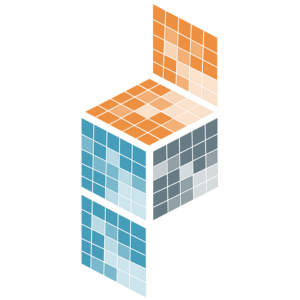
PyData Sparse
N-dimensional sparse arrays for the PyData Ecosystem

PyData Sparse
N-dimensional sparse arrays for the PyData Ecosystem
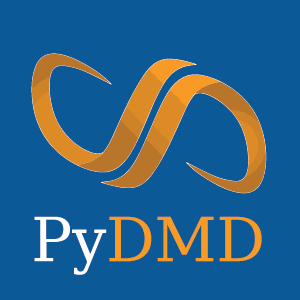
PyDMD
PyDMD is a Python package designed for Dynamic Mode Decomposition (DMD), a data-driven method used for analyzing and extracting spatiotemporal coherent structures from time-varying datasets. It provides a comprehensive and user-friendly interface for performing DMD analysis, making it a valuable tool for researchers, engineers, and data scientists working in various fields.

PyDMD
PyDMD is a Python package designed for Dynamic Mode Decomposition (DMD), a data-driven method used for analyzing and extracting spatiotemporal coherent structures from time-varying datasets. It provides a comprehensive and user-friendly interface for performing DMD analysis, making it a valuable tool for researchers, engineers, and data scientists working in various fields.

pyhf
pyhf is a pure-Python library for the building and serialization of statistical models used commonly in high energy particle physics.

pyhf
pyhf is a pure-Python library for the building and serialization of statistical models used commonly in high energy particle physics.
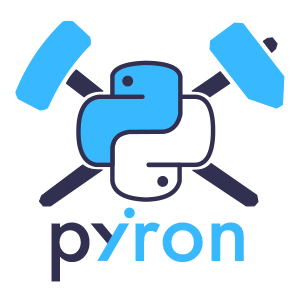
pyiron
pyiron is an integrated development environment (IDE) for computational materials science. It enables scientists to upscale their workflows from rapid prototyping to high-performance computing.

pyiron
pyiron is an integrated development environment (IDE) for computational materials science. It enables scientists to upscale their workflows from rapid prototyping to high-performance computing.

PyLops
PyLops is a Python library which facilitates solving large-scale inverse problems.

PyLops
PyLops is a Python library which facilitates solving large-scale inverse problems.

PyMC
PyMC is a Python-based statistical modeling tool for Bayesian statistical modeling and Probabilistic Machine Learning which focuses on advanced Markov chain Monte Carlo and variational fitting algorithms.

PyMC
PyMC is a Python-based statistical modeling tool for Bayesian statistical modeling and Probabilistic Machine Learning which focuses on advanced Markov chain Monte Carlo and variational fitting algorithms.

pyMOR
pyMOR is a software library for building model order reduction applications with the Python programming language.

pyMOR
pyMOR is a software library for building model order reduction applications with the Python programming language.
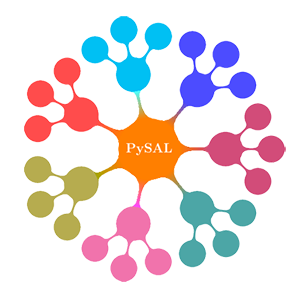
PySAL
PySAL is an open source cross-platform library for geospatial data science with an emphasis on vector data written in Python. It supports the development of high level applications for spatial analysis.

PySAL
PySAL is an open source cross-platform library for geospatial data science with an emphasis on vector data written in Python. It supports the development of high level applications for spatial analysis.
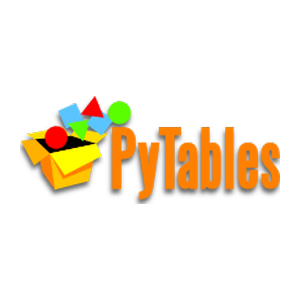
PyTables
PyTables is an efficient method for storing and querying both numerical and textual data. PyTables provides seamless access to the convenient HDF5 library, a popular container for datasets that can grow to terabytes and beyond. With its support of the ultra-fast Blosc compressor, PyTables optimizes memory and disk resources so that data takes up far less space than other solutions, without allowing compression to slow down your data management.

PyTables
PyTables is an efficient method for storing and querying both numerical and textual data. PyTables provides seamless access to the convenient HDF5 library, a popular container for datasets that can grow to terabytes and beyond. With its support of the ultra-fast Blosc compressor, PyTables optimizes memory and disk resources so that data takes up far less space than other solutions, without allowing compression to slow down your data management.

Python(X,Y)
Free scientific and engineering development software used for numerical computations, and analysis and visualization of data using the Python programming language

Python(X,Y)
Free scientific and engineering development software used for numerical computations, and analysis and visualization of data using the Python programming language

Python-graphblas
Python-graphblas is a foundation-layer library for sparse linear algebra.

Python-graphblas
Python-graphblas is a foundation-layer library for sparse linear algebra.
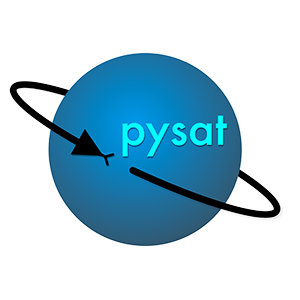
Python Satellite Data Analysis Toolkit (pysat)
pysat implements the general process of space science data analysis, from beginning to end, in an instrument-independent manner.

Python Satellite Data Analysis Toolkit (pysat)
pysat implements the general process of space science data analysis, from beginning to end, in an instrument-independent manner.
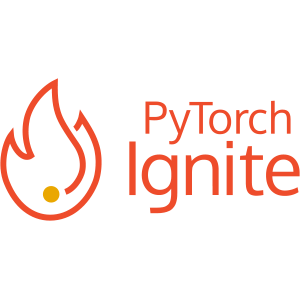
PyTorch-Ignite
PyTorch-Ignite is a high-level library to help with training neural networks in PyTorch

PyTorch-Ignite
PyTorch-Ignite is a high-level library to help with training neural networks in PyTorch

PyVista
PyVista is a helper module for the Visualization Toolkit (VTK) that takes a different approach on interfacing with VTK through NumPy and direct array access.

PyVista
PyVista is a helper module for the Visualization Toolkit (VTK) that takes a different approach on interfacing with VTK through NumPy and direct array access.

QuantEcon
QuantEcon is dedicated to improving economic modeling by providing and enhancing open source computational tools for economists. QuantEcon offers code libraries useful for economics; workshops, seminars and training; and an online archive of lectures on economics and programming.

QuantEcon
QuantEcon is dedicated to improving economic modeling by providing and enhancing open source computational tools for economists. QuantEcon offers code libraries useful for economics; workshops, seminars and training; and an online archive of lectures on economics and programming.

QuTiP
QuTiP is a software for simulating quantum systems. QuTiP aims to provide tools for user-friendly and efficient numerical simulations of open quantum systems.

QuTiP
QuTiP is a software for simulating quantum systems. QuTiP aims to provide tools for user-friendly and efficient numerical simulations of open quantum systems.

Radis
Radis is an open-source library to compute molecular spectra. It is used for in-the-lab emission and absorption spectroscopy diagnostics, and exoplanet research.

Radis
Radis is an open-source library to compute molecular spectra. It is used for in-the-lab emission and absorption spectroscopy diagnostics, and exoplanet research.

rOpenSci
rOpenSci creates technical and community infrastructure for open and reproducible research in the R language. It features a curated collection of over 300 R packages, an open software peer review system for community-contributed packages, a platform for building, testing, and publishing R packages, and documentation, and community engagement programs to support scientific R users and developers.

rOpenSci
rOpenSci creates technical and community infrastructure for open and reproducible research in the R language. It features a curated collection of over 300 R packages, an open software peer review system for community-contributed packages, a platform for building, testing, and publishing R packages, and documentation, and community engagement programs to support scientific R users and developers.

SageMath
SageMath is a comprehensive mathematical software system, developed since 2005.

SageMath
SageMath is a comprehensive mathematical software system, developed since 2005.

Scientific Python
The Scientific Python **ecosystem** is a loose federation of **community** developed and owned Python projects widely used in scientific research, technical computing, and data science. The Scientific Python project aims to coordinate the ecosystem better and prepare Scientific Python for the next decade.

Scientific Python
The Scientific Python **ecosystem** is a loose federation of **community** developed and owned Python projects widely used in scientific research, technical computing, and data science. The Scientific Python project aims to coordinate the ecosystem better and prepare Scientific Python for the next decade.

scikit-bio
scikit-bio is an open-source, BSD-licensed, python package providing data structures, algorithms, and educational resources for bioinformatics.

scikit-bio
scikit-bio is an open-source, BSD-licensed, python package providing data structures, algorithms, and educational resources for bioinformatics.

scikit-image
scikit-image aims to be the reference library for scientific image analysis in Python.

scikit-image
scikit-image aims to be the reference library for scientific image analysis in Python.

scikit-learn
Scikit–learn is a Python library for machine learning, and is one of the most widely used tools for supervised and unsupervised machine learning. Scikit–learn provides an easy-to-use, consistent interface to a large collection of machine learning models, as well as tools for model evaluation and data preparation.

scikit-learn
Scikit–learn is a Python library for machine learning, and is one of the most widely used tools for supervised and unsupervised machine learning. Scikit–learn provides an easy-to-use, consistent interface to a large collection of machine learning models, as well as tools for model evaluation and data preparation.

SciML
SciML is an open source software organization created to unify the packages for scientific machine learning. This includes the development of modular scientific simulation support software, such as differential equation solvers, along with the methodologies for inverse problems and automated model discovery. By providing a diverse set of tools with a common interface, we provide a modular, easily-extendable, and highly performant ecosystem for handling a wide variety of scientific simulations.

SciML
SciML is an open source software organization created to unify the packages for scientific machine learning. This includes the development of modular scientific simulation support software, such as differential equation solvers, along with the methodologies for inverse problems and automated model discovery. By providing a diverse set of tools with a common interface, we provide a modular, easily-extendable, and highly performant ecosystem for handling a wide variety of scientific simulations.

SciPy
SciPy provides fundamental numerical algorithms for scientific computing: statistics, numerical optimization, linear algebra, special functions, integration, interpolation, signal and image processing, and more. SciPy is a foundational building block for scientific and numerical computing in Python.

SciPy
SciPy provides fundamental numerical algorithms for scientific computing: statistics, numerical optimization, linear algebra, special functions, integration, interpolation, signal and image processing, and more. SciPy is a foundational building block for scientific and numerical computing in Python.

scverse
scverse is a consortium of foundational tools for analysis of omics data in life sciences. It has been founded to ensure the long-term maintenance of these core tools.

scverse
scverse is a consortium of foundational tools for analysis of omics data in life sciences. It has been founded to ensure the long-term maintenance of these core tools.

sgkit
sgkit is a toolkit for population and statistical genetics in Python.

sgkit
sgkit is a toolkit for population and statistical genetics in Python.

signac
The signac framework is a complete solution for managing workflows operating on file-based data designed to scale to HPC systems.

signac
The signac framework is a complete solution for managing workflows operating on file-based data designed to scale to HPC systems.
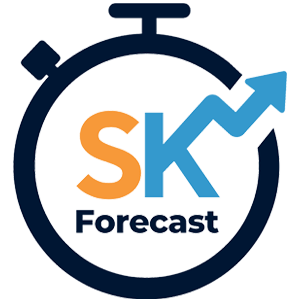
skforecast
Skforecast is a Python library that eases using scikit-learn regressors as single and multi-step forecasters. It also works with any regressor compatible with the scikit-learn API (LightGBM, XGBoost, CatBoost, …)

skforecast
Skforecast is a Python library that eases using scikit-learn regressors as single and multi-step forecasters. It also works with any regressor compatible with the scikit-learn API (LightGBM, XGBoost, CatBoost, …)

SkyPy
SkyPy is an open-source Python package for simulating the astrophysical sky. It comprises a library of physical and empirical models across a range of observables and a command-line script to run end-to-end simulations.

SkyPy
SkyPy is an open-source Python package for simulating the astrophysical sky. It comprises a library of physical and empirical models across a range of observables and a command-line script to run end-to-end simulations.

Snakemake
The Snakemake workflow management system is a framework for reproducible and scalable data analyses. Workflows are described via a human readable, Python based language.

Snakemake
The Snakemake workflow management system is a framework for reproducible and scalable data analyses. Workflows are described via a human readable, Python based language.

Solcore
Solcore is a complete semiconductor solver able of modelling the optical and electrical properties of a wide range of solar cells, from quantum well devices to multi-junction solar cells.

Solcore
Solcore is a complete semiconductor solver able of modelling the optical and electrical properties of a wide range of solar cells, from quantum well devices to multi-junction solar cells.
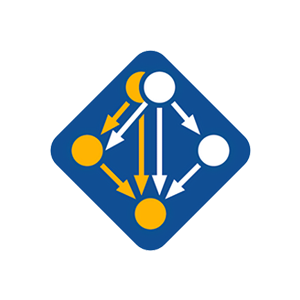
Spack
Spack is a flexible package manager that builds multiple versions of packages for different configurations, platforms, and compilers. It was created to deploy large-scale scientific simulations on HPC systems, but it can deploy software on Linux and macOS machines, as well.

Spack
Spack is a flexible package manager that builds multiple versions of packages for different configurations, platforms, and compilers. It was created to deploy large-scale scientific simulations on HPC systems, but it can deploy software on Linux and macOS machines, as well.

SPHinXsys
SPHinXsys provides C++ APIs for physical accurate simulation and aims to model coupled industrial dynamic systems including fluid, solid, multi-body dynamics and beyond.

SPHinXsys
SPHinXsys provides C++ APIs for physical accurate simulation and aims to model coupled industrial dynamic systems including fluid, solid, multi-body dynamics and beyond.

Spyder
Spyder is a powerful scientific environment written in Python, for Python, and designed by and for scientists, engineers and data analysts. It features a unique combination of the advanced editing, analysis, debugging, and profiling functionality of a comprehensive development tool with the data exploration, interactive execution, deep inspection, and beautiful visualization capabilities of a scientific package. The Spyder project also maintains a number of other popular tools in the PyData ecosystem and beyond, including Jupyter QtConsole, QtPy, QtAwesome, Python-LSP-Server, LogHub, Lektor-Icon, Docrepr and more, alongside a bevy of Spyder plugins.

Spyder
Spyder is a powerful scientific environment written in Python, for Python, and designed by and for scientists, engineers and data analysts. It features a unique combination of the advanced editing, analysis, debugging, and profiling functionality of a comprehensive development tool with the data exploration, interactive execution, deep inspection, and beautiful visualization capabilities of a scientific package. The Spyder project also maintains a number of other popular tools in the PyData ecosystem and beyond, including Jupyter QtConsole, QtPy, QtAwesome, Python-LSP-Server, LogHub, Lektor-Icon, Docrepr and more, alongside a bevy of Spyder plugins.

Stan
Stan is a platform for Bayesian modeling, inference, and visualization on the frontiers of applied statistics.

Stan
Stan is a platform for Bayesian modeling, inference, and visualization on the frontiers of applied statistics.

Statsmodels
Statsmodels is a Python package that provides a complement to Scipy for statistical computations including descriptive statistics and estimation of statistical models.

Statsmodels
Statsmodels is a Python package that provides a complement to Scipy for statistical computations including descriptive statistics and estimation of statistical models.

STUMPY
STUMPY is a powerful and scalable Python library for modern time series analysis.

STUMPY
STUMPY is a powerful and scalable Python library for modern time series analysis.

SunPeek
SunPeek is a python package and web application for assesing the operational performance of Large Solar-thermal Arrays. It implements the ISO 24194 Performance Check standard, and is intended to assist researchers and plant operators in understanding the long term performance of these systems.

SunPeek
SunPeek is a python package and web application for assesing the operational performance of Large Solar-thermal Arrays. It implements the ISO 24194 Performance Check standard, and is intended to assist researchers and plant operators in understanding the long term performance of these systems.

SunPy
SunPy is a Python-based software library that provides tools for performing research using direct observations of the Sun and Heliosphere.

SunPy
SunPy is a Python-based software library that provides tools for performing research using direct observations of the Sun and Heliosphere.

SymPy
SymPy is a library for symbolic mathematics, which means performing mathematical calculations exactly (as opposed to inexact numeric calculations from libraries such as NumPy). Its core features include basic arithmetic, simplification trigonometry, polynomials, expansion, functions, substitution, numbers, noncommutative symbols, and pattern matching.

SymPy
SymPy is a library for symbolic mathematics, which means performing mathematical calculations exactly (as opposed to inexact numeric calculations from libraries such as NumPy). Its core features include basic arithmetic, simplification trigonometry, polynomials, expansion, functions, substitution, numbers, noncommutative symbols, and pattern matching.

TARDIS
TARDIS is a collection of tools to analyze observations from exploding stars and is widely adopted in the astrophysical community for cutting edge science. TARDIS is a multi-disciplinary collaboration applying new tools from artificial intelligence research and high-performance computing with an open-source development structure.

TARDIS
TARDIS is a collection of tools to analyze observations from exploding stars and is widely adopted in the astrophysical community for cutting edge science. TARDIS is a multi-disciplinary collaboration applying new tools from artificial intelligence research and high-performance computing with an open-source development structure.

Taskflow
Parallel and heterogeneous programming with high performance and simultaneous high productivity

Taskflow
Parallel and heterogeneous programming with high performance and simultaneous high productivity

The Ibis Project
Ibis provides expressive analytics at any scale. It’s an library designed to help users be more productive when interacting with analytics databases and engines.

The Ibis Project
Ibis provides expressive analytics at any scale. It’s an library designed to help users be more productive when interacting with analytics databases and engines.

TNL - Template Numerical Library
TNL is an efficient C++ library providing many parallel algorithms and data structures for high-performance computing on GPUs, multicore CPUs and distributed clusters.

TNL - Template Numerical Library
TNL is an efficient C++ library providing many parallel algorithms and data structures for high-performance computing on GPUs, multicore CPUs and distributed clusters.
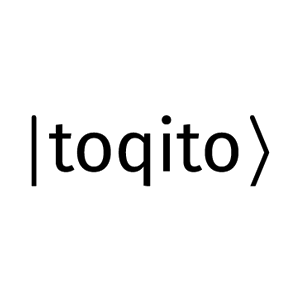
toqito
The toqito package is an open-source library for studying various objects in quantum information, namely, states, channels, and measurements. toqito provides numerical tools to study problems about entanglement theory, nonlocal games, and other aspects of quantum information often associated with computer science.

toqito
The toqito package is an open-source library for studying various objects in quantum information, namely, states, channels, and measurements. toqito provides numerical tools to study problems about entanglement theory, nonlocal games, and other aspects of quantum information often associated with computer science.

Trixi.jl
Trixi.jl is a numerical simulation framework for conservation laws written in the Julia programming language.

Trixi.jl
Trixi.jl is a numerical simulation framework for conservation laws written in the Julia programming language.
Vega
The Vega Projects constitute a cohesive ecosystem of visualization libraries: Vega is a visualization grammar; a declarative format for creating, saving, and sharing interactive visualization designs. Vega-Lite provides a higher-level grammar for visual analysis and Vega-Altair provides Python bindings for Vega-Lite. This grammatical implementation of graphics and interactivity produces beautiful and effective visualizations with a minimal amount of code. VegaFusion scales Vega-Altair to large datasets and VL Convert provides publication quality static file export.
Vega
The Vega Projects constitute a cohesive ecosystem of visualization libraries: Vega is a visualization grammar; a declarative format for creating, saving, and sharing interactive visualization designs. Vega-Lite provides a higher-level grammar for visual analysis and Vega-Altair provides Python bindings for Vega-Lite. This grammatical implementation of graphics and interactivity produces beautiful and effective visualizations with a minimal amount of code. VegaFusion scales Vega-Altair to large datasets and VL Convert provides publication quality static file export.

Visual Python
Visual Python is a GUI-based Python code generator, developed on the Jupyter Lab, Jupyter Notebook and Google Colab as an extension. Visual Python is an open source project started for students who struggle with coding during Python classes for data science.

Visual Python
Visual Python is a GUI-based Python code generator, developed on the Jupyter Lab, Jupyter Notebook and Google Colab as an extension. Visual Python is an open source project started for students who struggle with coding during Python classes for data science.

WESTPA
WESTPA (The Weighted Ensemble Simulation Toolkit with Parallelization and Analysis) is a high-performance Python framework

WESTPA
WESTPA (The Weighted Ensemble Simulation Toolkit with Parallelization and Analysis) is a high-performance Python framework

WorldWide Telescope
Thanks to the flexibility of its underlying rendering engine, WWT is used in projects ranging from astrophysics research to education, public outreach, and simply sharing the wonder of the universe. For instance, the WWT web toolkit is used in the Chandra Source Catalog viewer of NASA’s Chandra X-Ray Center, the StarHunt student research project funded by the Nobel Prize Museum, and interactive educational applications created for NASA’s Bringing the Universe to America’s Classrooms program. The WWT Windows application has powered hundreds of planetariums, from small portable domes to world-class facilities like the Adler Planetarium in Chicago.

WorldWide Telescope
Thanks to the flexibility of its underlying rendering engine, WWT is used in projects ranging from astrophysics research to education, public outreach, and simply sharing the wonder of the universe. For instance, the WWT web toolkit is used in the Chandra Source Catalog viewer of NASA’s Chandra X-Ray Center, the StarHunt student research project funded by the Nobel Prize Museum, and interactive educational applications created for NASA’s Bringing the Universe to America’s Classrooms program. The WWT Windows application has powered hundreds of planetariums, from small portable domes to world-class facilities like the Adler Planetarium in Chicago.

xarray
Xarray is an open source library providing high-level, easy-to-use data structures and analysis tools for working with multidimensional labeled datasets and arrays in Python.

xarray
Xarray is an open source library providing high-level, easy-to-use data structures and analysis tools for working with multidimensional labeled datasets and arrays in Python.

XGI
The CompleX Group Interactions (XGI) library provides data structures and algorithms for modeling and analyzing complex systems with group (higher-order) interactions, i.e. hypergraphs and simplicial complexes.

XGI
The CompleX Group Interactions (XGI) library provides data structures and algorithms for modeling and analyzing complex systems with group (higher-order) interactions, i.e. hypergraphs and simplicial complexes.

Yellowbrick
Yellowbrick is a Python package that visualizes the data science workflow, allowing users to visually steer the feature, algorithm, and hyperparameter selection process by directly extending the Scikit-Learn API.

Yellowbrick
Yellowbrick is a Python package that visualizes the data science workflow, allowing users to visually steer the feature, algorithm, and hyperparameter selection process by directly extending the Scikit-Learn API.

yt
yt is a tool for querying, analyzing and visualizing objects or regions of interest to identify emergent properties in data available in a variety of real-world research data formats. Initially developed for use by professional astronomers, yt can be applied in a variety of domains including astrophysics, seismology, nuclear engineering, molecular dynamics, and oceanography.

yt
yt is a tool for querying, analyzing and visualizing objects or regions of interest to identify emergent properties in data available in a variety of real-world research data formats. Initially developed for use by professional astronomers, yt can be applied in a variety of domains including astrophysics, seismology, nuclear engineering, molecular dynamics, and oceanography.

Zarr
Zarr: scalable storage of tensor data for scientific computing

Zarr
Zarr: scalable storage of tensor data for scientific computing